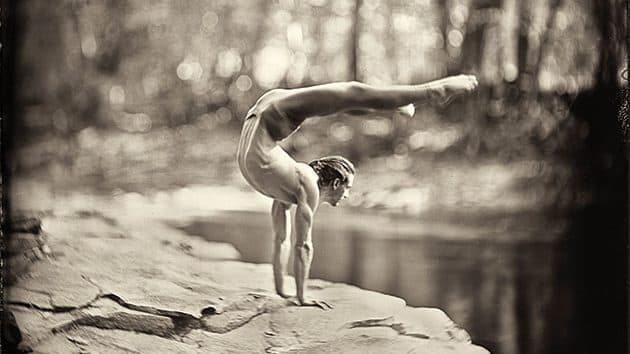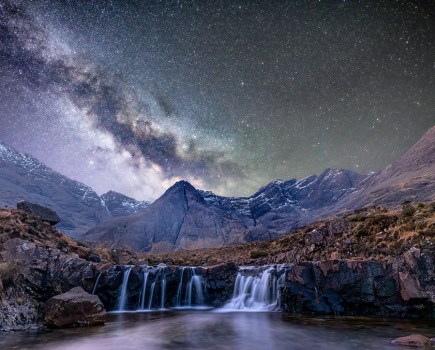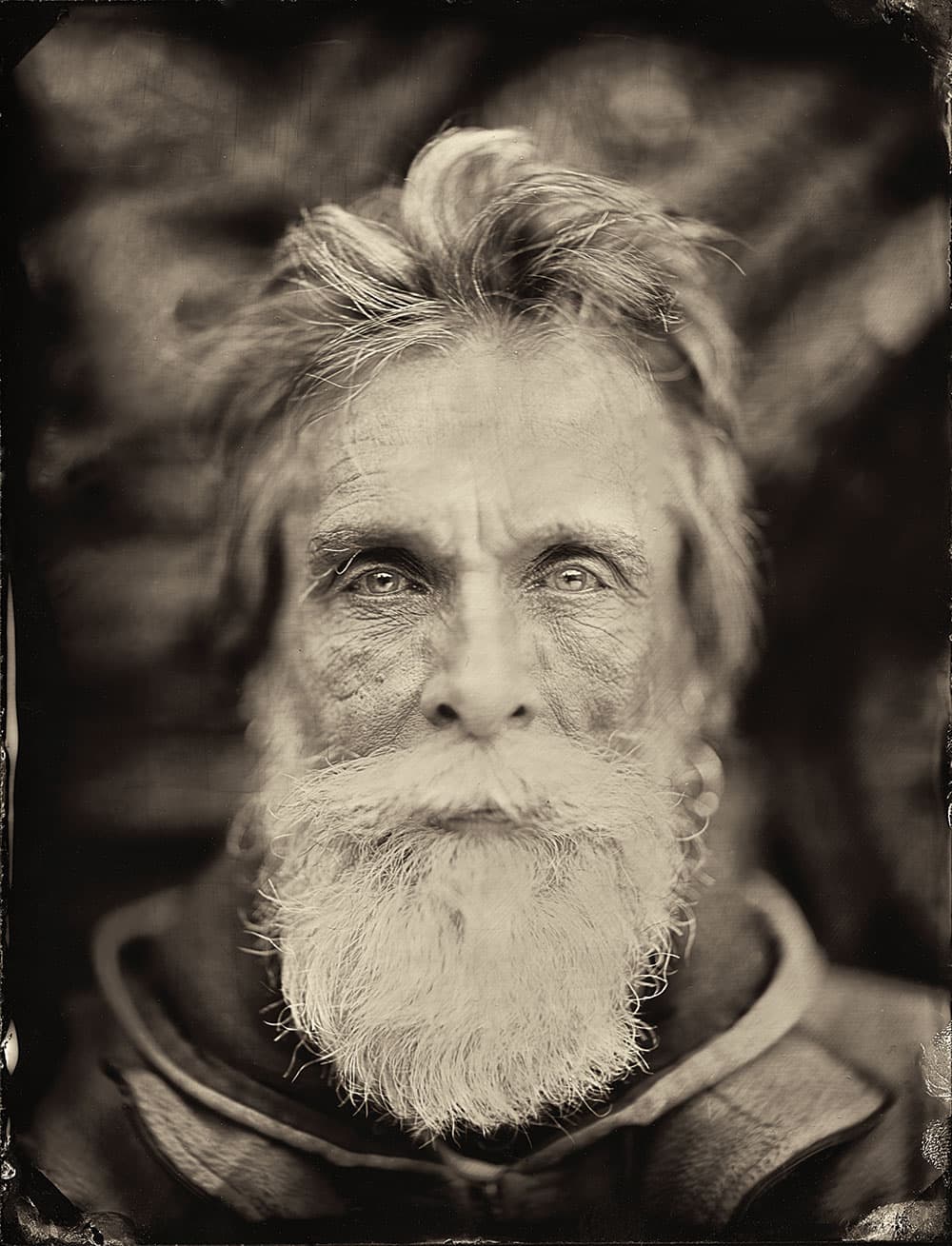
David Life, one of the most famous yoga teachers in the USA and co-founder of the Jivamukti Yoga method. Credit: Francesco Mastalia
AP receives a steady stream of books for review, so it takes something special to stop us in our tracks. Yoga: The Secret of Life by US photographer Francesco Mastalia is one such book, being a collection of portraits of yoga masters taken using the Victorian wet collodion process. The images are stunningly beautiful. Compared to digital photography, wet collodion is mind bogglingly time-consuming and fiddly, so we caught up with Francesco to find out why (and how) he used a 19th-century process to document 21st-century yoga masters.
Francesco lives and works in the Hudson valley in New York State, and cut his photographic teeth in New York City as assistant to commercial photographers. ‘I knew from an early age that I wanted to be a photographer and when I got out of high school I asked myself, why should I work for a living when I can just take pictures? So I attended photography school in New York City and went on to assist for over 30 big-name advertising, portrait, fashion, food and architectural photographers. I’ve been a freelance photographer since the late ’70s and now mainly do corporate work, particularly portraits, as well as book projects.’
Continues below…
[collection name=”small”]
When Francesco started work on the book, he didn’t practise yoga, but soon became a convert. ‘What got me started was seeing these practitioners, or yogis, in these extraordinary poses. I started to see the potential of human body as a thing of beauty, so the book was really about capturing its strength and grace.’ His original goal was to photograph 108 yogis in different postures, but this approach had to change.
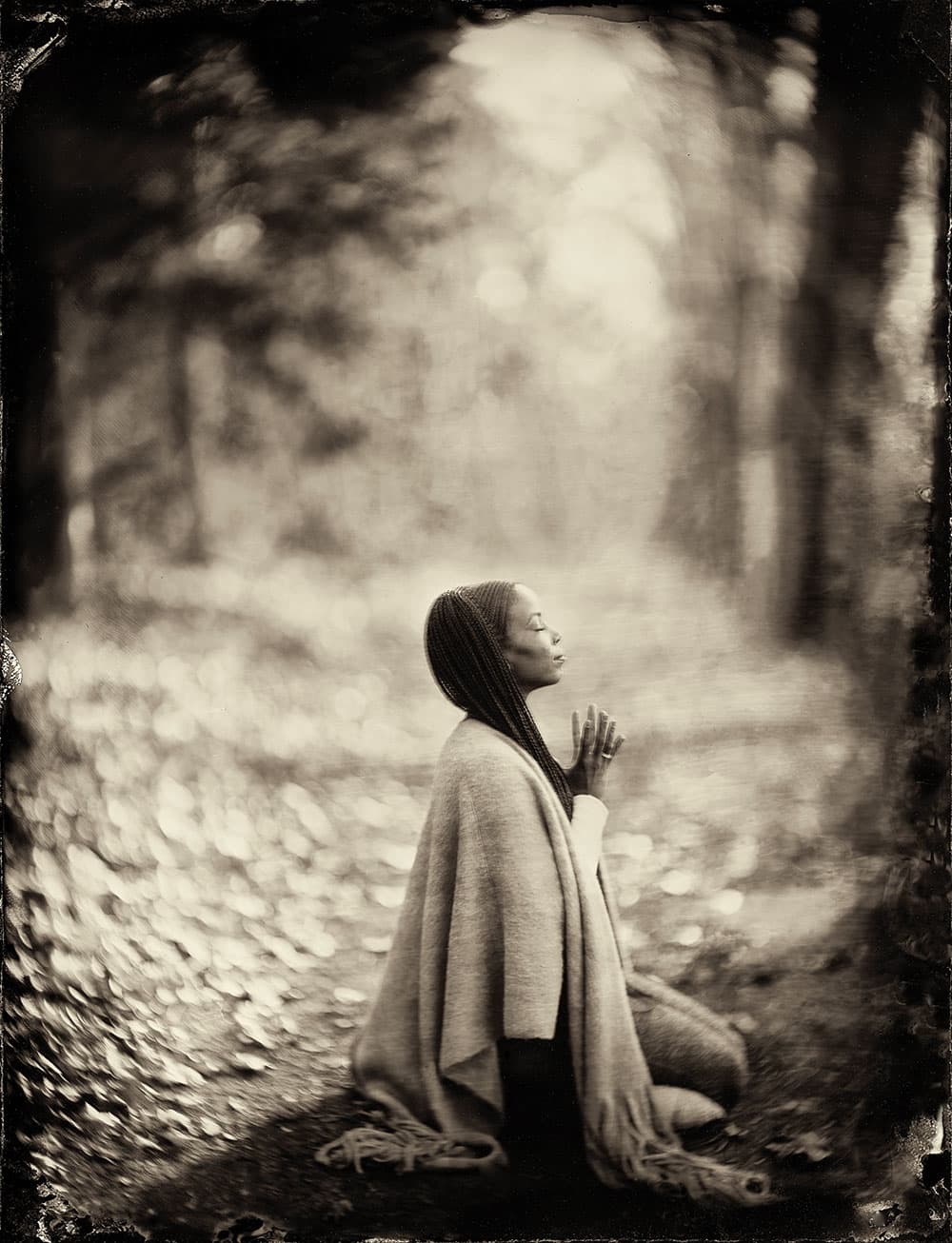
Chelsea Jackson Roberts, yoga master and academic. She runs numerous courses and workshops to encourage community building through yoga. Credit: Francesco Mastalia
‘One of my first subjects, who has been practising since the 1970s, said, “I don’t want to be photographed in a yoga posture, I’d prefer a meditation pose.” I started to hear this emphasis on yoga as a spiritual practice from other subjects too, so I asked them to think of this as a self-portrait, a photograph that represents them and their practice. In other words, I let them decide how they wanted to be photographed.’
Francesco also reckons it was an advantage that he didn’t practise yoga at the start of the project, as he might have been biased towards yogis from a particular style.
At first glance it seems as if the yogis in the book were shot in a peaceful Indian forest, but their portraits were all taken near Francesco’s home in Rhinebeck, two hours north of New York City.
‘The Omega Institute for Holistic Studies is near me, and it attracts a lot of yoga practitioners from all over the world. They were on board from day one, enabling me to select some world-class yogis from their teaching catalogue. There are teachers from India, Sweden, Canada and all over the US. I prefer to work fairly close to home as it’s hard to use the wet collodion process on the road – there are the chemicals to transport and you need a darkroom, so the expense would be prohibitive.’
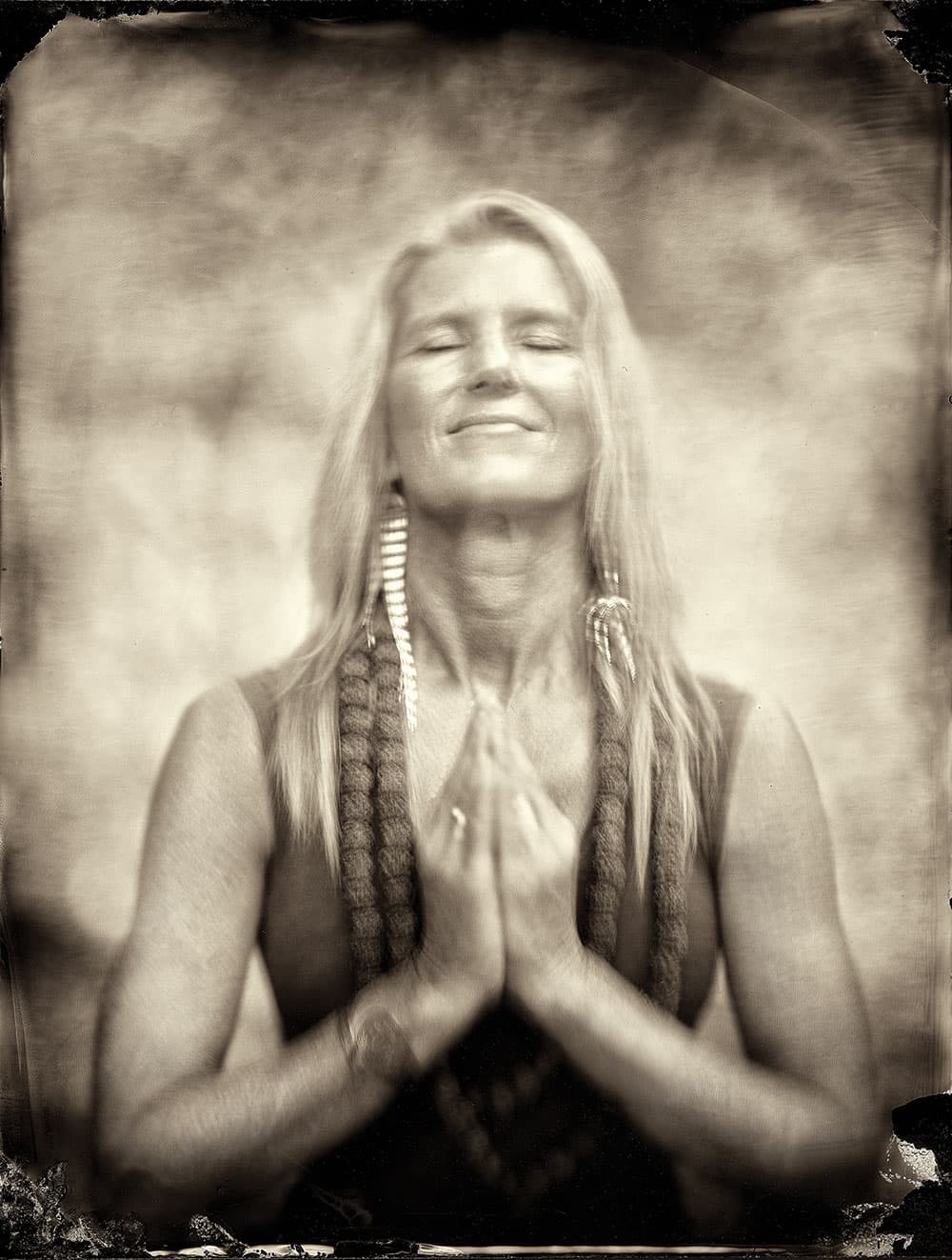
Shiva Rea, yogi (female, yogini) and author who helps to spread her form of Vinyasa yoga around the world. Credit: Francesco Mastalia
Wet, wet, wet
The next question is obvious – why did Francesco decide to use the wet collodion process at all? ‘I’ve been a devotee since 2005. My roots are in film photography and what I loved most about it was the darkroom. It was in here that I felt I was a photographer. When digital came along, it was supposed to make life easier for me but I said, hold on, I love using chemicals! I do now use a digital camera for commercial jobs but I was the last of my photographer friends to own one.
‘What I love about wet collodion is that every step is done by hand. Making my own film, making my own emulsion, mixing my developer, using silver nitrate – you really are connected to the process. It’s so unpredictable too. It presents all of these unknowns, which I find to be beautiful compared to the precision and predictability of digital photography. I like to work with a process which is challenging.’
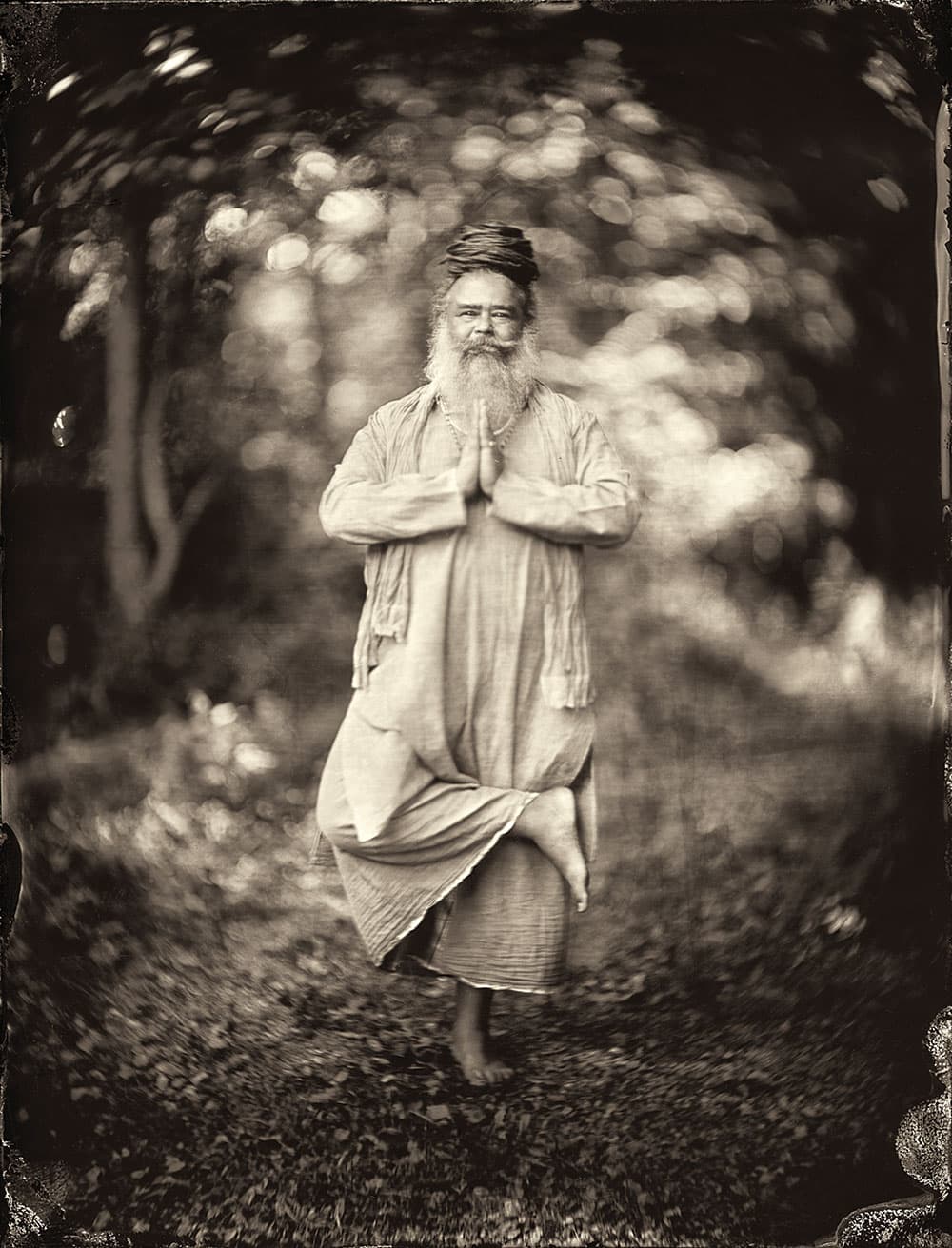
Shiv Mirabito, who describes himself as a Tantric Buddhist- Hindu yogi. He is also a poet and photographer. Credit: Francesco Mastalia
Another big attraction, according to Francesco, is that it’s not possible to take the same photograph twice. ‘There are so many elements which come into play. First, there’s the sensitivity to ultraviolet light; I really don’t know what the final image will look like. The process is also sensitive to the temperature, the humidity, and the age of the collodion.’ You can forget any histograms, autofocus or sophisticated modern metering systems, either. ‘There is no light meter to guide the exposure as there is no way to calculate all these variables in seconds. I have to work it out as I go along, based on past experience. I am not trying to freeze time, but to use time to capture the energy of light. The exposures range from 5-15 seconds and my shutter is taking in so much information, so nature plays a big role – the camera records wind, movement in the background, stuff that the eyes can’t see. The process is full of beautiful surprises.’
So there were lots of challenges, but Francesco reckons that wet collodion photographers need to jettison any notions of technical perfection. ‘People ask me, “Do you shoot any bad ones before you get a perfect one?” But I don’t strive for perfection in this process as I don’t know how to define it. Each plate I develop gives me information for the next one, and I embrace the way the chemicals or developers react. All these unknown elements appear, and for me art is what we decide to do with the unknown. I love seeing all these surprises when the image comes out.’
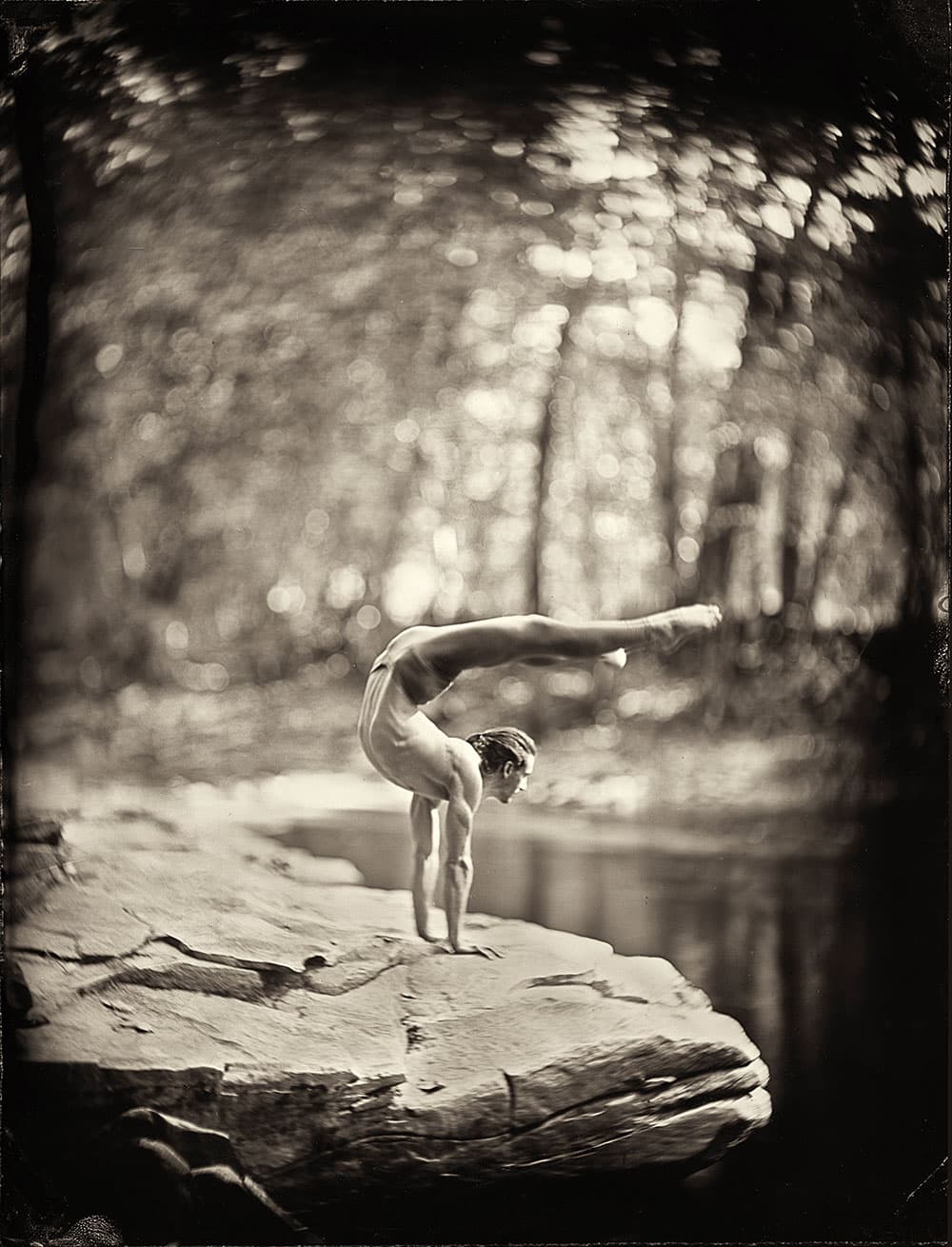
Jared McCann, a self-confessed former drug addict turned yogi, famous for his incredible flexibility. ‘Yoga definitely changed my life,’ he says. Credit: Francesco Mastalia
The eyes have it
There are lot of portraits in the book, but Francesco does have his favourites. ‘I love the image of Jared McCann (above) who does the most amazing things with his body. I also like the close-ups of the yogis. I thought it would be great to look into their eyes as there are plenty of pictures of Dharma Mittra, for example, standing on his head with no hands. He is now 77 but when he was in his 40s, he photographed himself in over 1,000 different yoga postures as a sign of devotion to his guru. I told him this book shoot would be a lot easier as I just wanted to capture his eyes! I also got some great close-ups of David Life. The exposures on these portraits are about 5-10 seconds, so you really feel you are looking into the eyes of these masters and can feel their energy penetrating you. One of the most powerful things we can do is to look into eyes of another human being.’
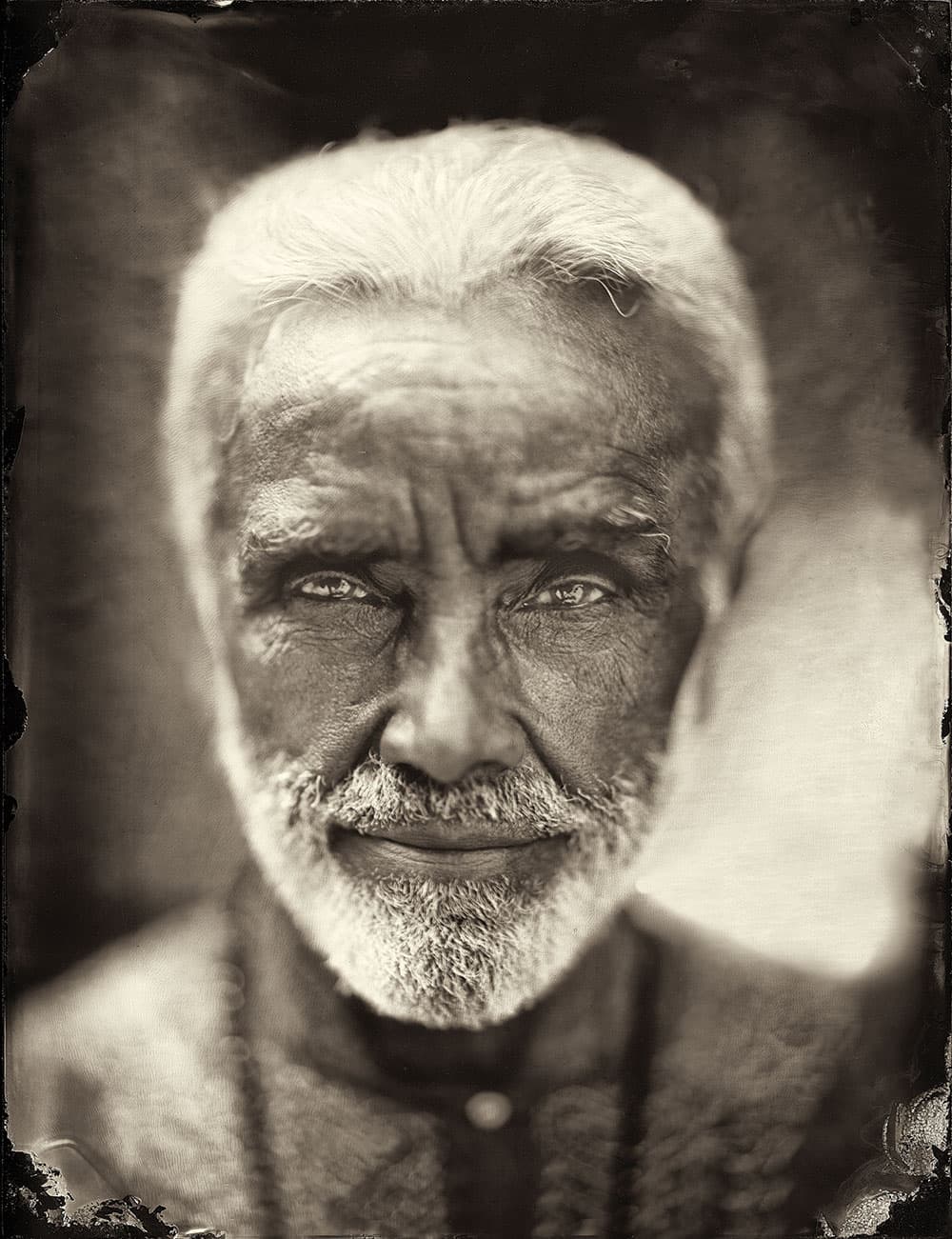
Dharma Mittra, another world-famous yogi. Francesco was keen to capture the power of his gaze. Credit: Francesco Mastalia
Francesco may revel in the arcane Victorian wet collodion process, but he had to embrace modern realities when getting the book ready.
‘I work on making black glass (ambertypes) and underneath light they look amazing, with beautiful gradation. Once you scan the plates, they turn into something else. While I can’t match the plate exactly, I approach the process from a darkroom perspective, adjusting density or contrast while trying to stay close to the original.’
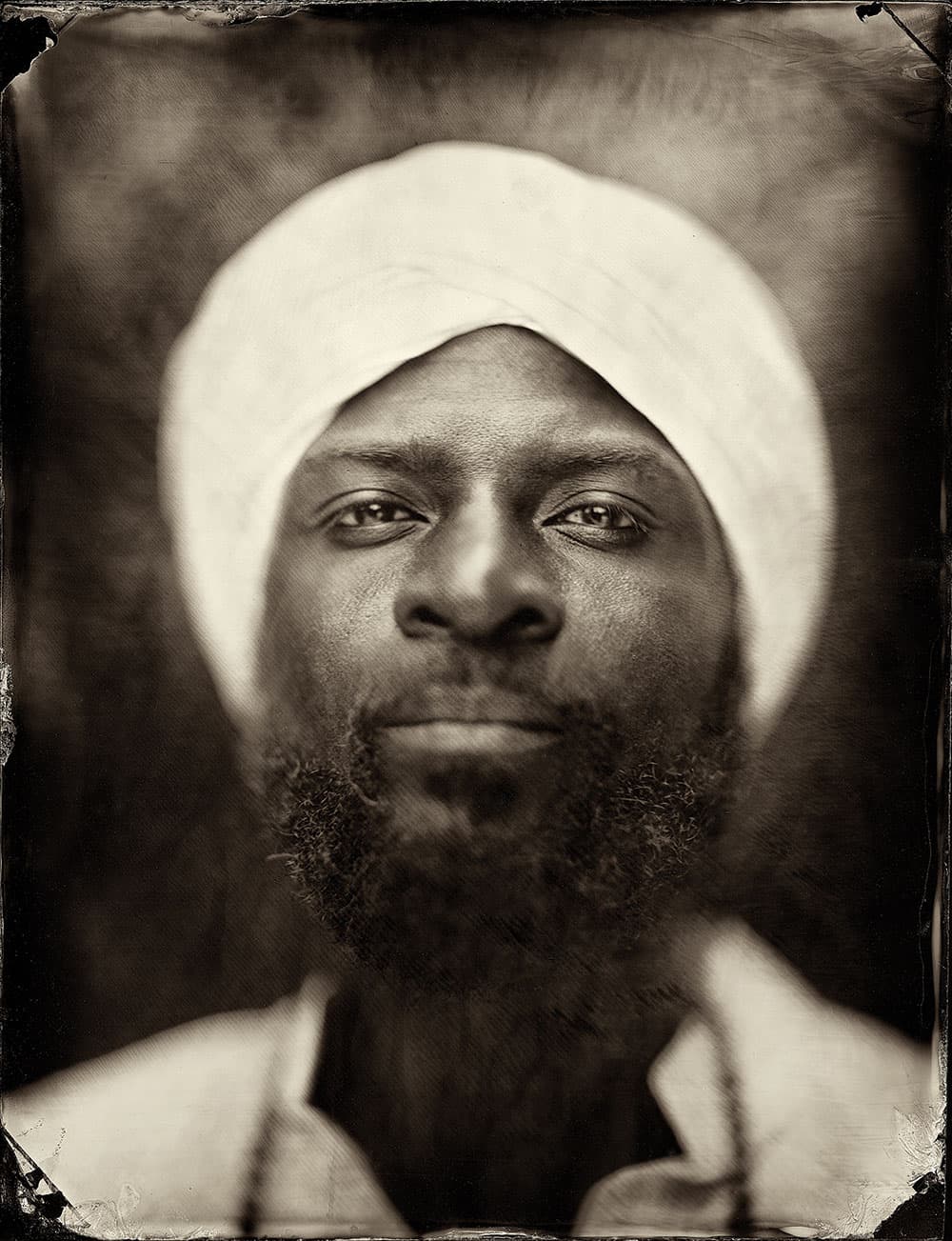
Amanbir, a herbalist, massage therapist and acupuncturist, as well as a top yogi. Credit: Francesco Mastalia
While a lot of photographers would have to turn to crowdfunding to get such a niche book project off the ground, Francesco already had a relationship with publisher powerHouse Books and he gave them first refusal. ‘powerHouse has been fantastic, it does a lot of photography books and did a great job with the printing.’ His next project is going to be a book on celebrities who practise Buddhism, again using the wet collodion process. ‘I am starting next spring and it’s also going to be based in the US. Another book on Buddhist monks wouldn’t get much attention, but by focusing on the many well-known people who practise Buddhism, I hope the book will get noticed more.’
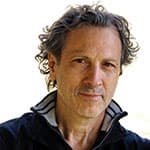 Francesco Mastalia is a US photographer and passionate exponent of the wet collodion process for his book projects. See his work at www.francescomastalia.com. Yoga: The Secret of Life published by powerHouse books (ISBN 978-157687-856-9) is on sale now.
Francesco Mastalia is a US photographer and passionate exponent of the wet collodion process for his book projects. See his work at www.francescomastalia.com. Yoga: The Secret of Life published by powerHouse books (ISBN 978-157687-856-9) is on sale now.

